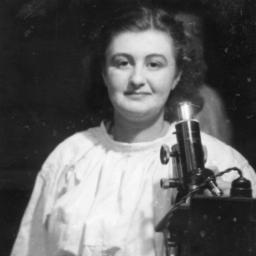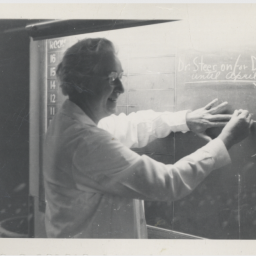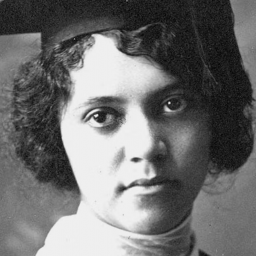Barbara McClintock
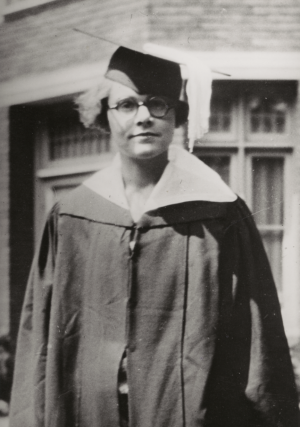
Barbara McClintock overcame early 20th-century gender norms and institutional barriers to pursue a career in science, demonstrating a lifelong commitment to equity and academic excellence.
Her discovery of transposable elements, or “jumping genes,” fundamentally changed the field of genetics and laid the groundwork for epigenetics and gene regulation.
“If you know you are on the right track, if you have this inner knowledge, then nobody can turn you off... no matter what they say.”
Early Life
Barbara McClintock was born on June 16, 1902, in Hartford, Connecticut, to Thomas and Sara McClintock; however, the family would later relocate to Brooklyn, New York in 1908. The third of four children, Barbara exhibited a fiercely independent and intellectually curious disposition from a young age. Her mother believed learners should “not only be readers but thinkers as well” and “should never be an imitator of his teacher” (Kass, 2024, p. 33).
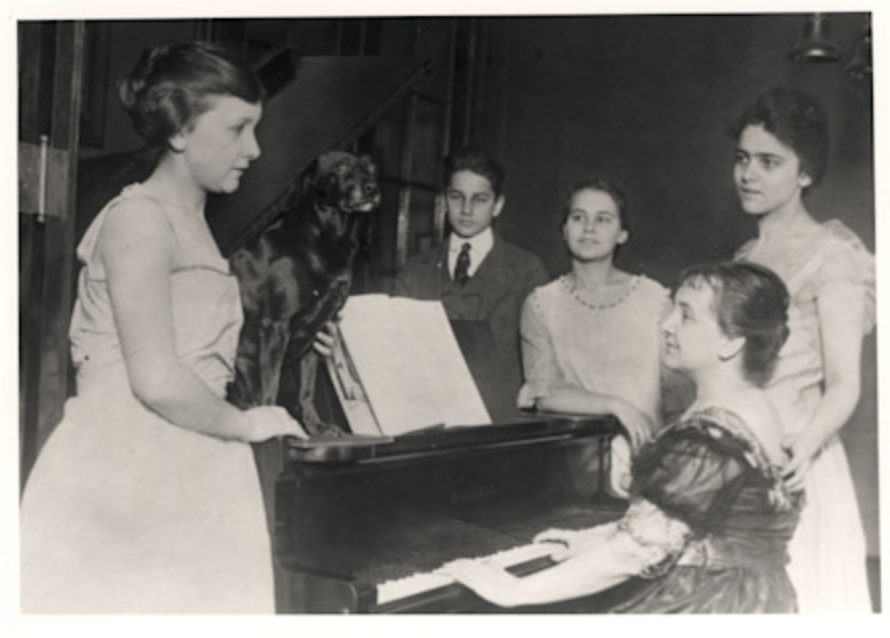
Figure 1
McClintock Family, Barbara is third from the right.
McClintock discovered her passion for science at Erasmus Hall (Small, 2017). Outside of her academic pursuits, McClintock participated in the girls swimming team, the school’s debating society, as well as the inaugural riding club (Kass, 2024). Her high school experience was unfortunately colored by her father leaving to serve in World War I, as well as the 1918 flu pandemic, but McClintock still graduated from Erasmus Hall in June of 1919 (Kass, 2024). Despite her parents’ encouragement to pursue topics that interested her, her mother did not believe higher education was a prosperous path for a woman. McClintock’s mother worried that pursuing higher education would make her daughter less attractive candidate for marriage—a common belief in the early 20th century, when educated women were often seen as threatening to traditional gender roles and expectations. At the time, many feared that intellectual ambition in women would undermine their femininity and discourage potential suitors (Kass, 2024; Small, 2017). When her father returned from serving oversees, he persuaded her mother to support Barbara’s intentions to attend college, but she began to actively aid McClintock’s efforts in applying for college (Kass, 2024; Small, 2017).
Education
McClintock attended Cornell University which “had a vision of providing education to all students” despite the plant breeding department of Cornell not accepting women at the time (Small, 2017, p. 13). Instead, McClintock enrolled in the botany department at the New York State College of Agriculture within Cornell University (Small, 2017). She thrived academically and was invited to join honor societies, but declined after discovering that the organizations excluded students based on gender and social status. This experience reinforced her deep commitment to fairness and merit-based evaluation—a principle she carried throughout her scientific career, often challenging gender biases in academia and research (Keller, 1983; Small, 2017).
After a Cornell professor invited her to take a graduate course in genetics, McClintock’s specialty narrowed to cytogenetics or the study of how chromosomes are expressed (Small, 2017). When recalling her love for the field she said “No two plants are exactly alike...I know them intimately. And I find it a great pleasure to know them” (Nobel Prize Outreach, N.D.). She completed her coursework and research with her degreed being confirmed December 1, 1924.
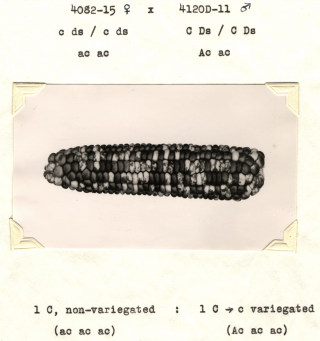
Figure 2
Tri-ploid maize specimen
In 1925, McClintock pursued a PhD in botany at Cornell University. She continued her research under Lowell Fitz Randolph working to research the genetics of the triploid maize plant (Kass, 2024). This became the foundation of McClintock’s research into cytogenetics (Kass, 2024). However, her relationship with her research partner deteriorated and eventually ended when McClintock was named as a second author in a 1926 publication for which she had done a majority of the labor (Kass, 2024). McClintock continued her research on the “B” or accessory chromosome of corn as the center of her PhD thesis. At a time when women were often excluded from full participation in scientific research, McClintock persisted in conducting pioneering work that challenged both scientific and social conventions. By centering her PhD on chromosome behavior in maize, Barbara McClintock navigated institutional barriers, advanced the study of genetics, and laid the groundwork for future generations of women in science by redefining who could lead the field.
Jumping Genetics & the Cold Springs Harbor Laboratory
After teaching at Cornell University, McClintock conducted research at Cold Spring Harbor Laboratory funded by the Carnegie Institution (Nobel Prize Outreach, N.D.). McClintock studied the successive generations of maize and how genetics determined the colors of the kernels. Unlike previous understanding of genetics which suggested that “instead of being locked into place giving fixed instructions from generation to generation, some genes could move around or “transpose” within chromosomes, switching physical traits on or off according to certain “controlling elements” (Nobel Prize Outreach, N.D.). As soon as she made her discovery, she began to share findings with the scientific community in 1951. Upon doing so, McClintock’s peers “thought I was crazy, absolutely mad” (Nobel Prize Outreach, N.D.).
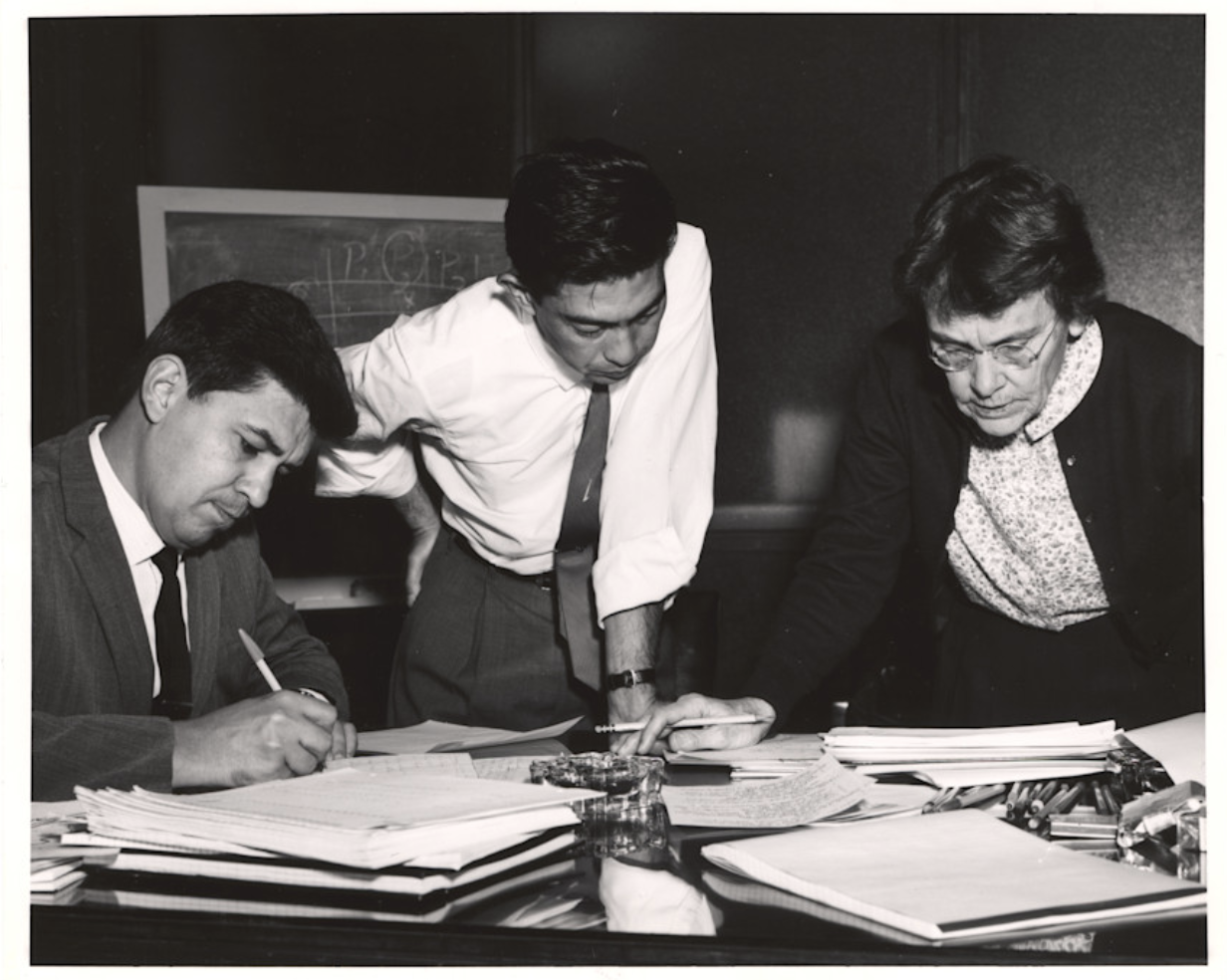
Figure 3
McClintock with her colleagues Almiro Blumenschein, and Angel Kato.
The continuous negative reaction from other scientists eventually led to McClintock halting her lectures and publishing agenda, but it did not stop her from continuing her work. It would not be until the 1960s, some ten years later, that the scientific community at large began validating her findings in their own research. McClintock chose to retire from her research work at the Cold Spring Harbor Laboratory in 1967, but the legacy of her work was just beginning to receive the recognition it was due.
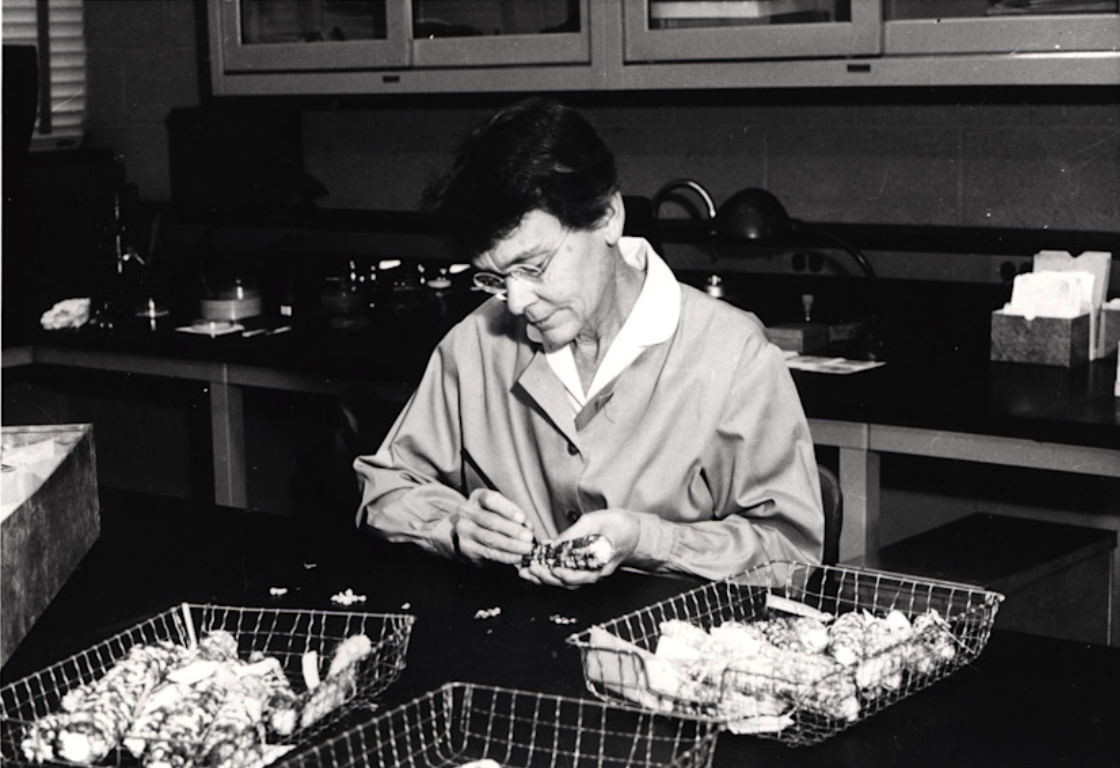
Figure 4
McClintock studying the triploid maize.
Recognition
Thiry years after her retirement, McClintock was nominated for the Nobel Prize in 1982, but the letter for her nomination used incorrect terminology. She was nominated by Herschel Roman and Marcus Rhoades, who incorrectly summarized her research findings which would cost her the Nobel Prize (Kass, 2024). After the first nomination fell through, a veritable team of her peers gathered in support to nominate her again noting that they were sure that McClintock’s work was revolutionary and she deserved recognition (Kass, 2024).
The efforts of her peers paid off and in 1983, McClintock was the first woman in history to be awarded the Nobel Prize in Physiology or Medicine for her discovery in mobile genetic element otherwise known as jumping genes. Though the Nobel Prize could certainly be considered the peak of her awards, McClintock also earned the National Medal of Science in 1970, the Wolf Prize in Medicine in 1981, and an induction into the National Women’s Hall of Fame in 1986. Additionally, McClintock received honorary Doctor of Science degrees from multiple universities.

Figure 5
McClintock receiving the Nobel Prize.
Legacy
McClintock’s legacy in science survives with her discovery of the jumping gene and how the scientific community would forever think about genetics. She was often isolated in her convictions, ridiculed for theories that would later prove visionary, and overlooked for recognition she so clearly deserved. Still, she pressed on—not for fame, but for the thrill of discovery and the satisfaction of understanding life at its most fundamental level. Her work laid the foundation for the field of epigenetics, genome plasticity, and gene regulation. Furthermore, her meticulous cytogenetic techniques and her dedication to long-term immersive observation influenced not only scientific research, but also the ways in which science is taught and conceptualized. She persisted in a field that often questioned her presence, let alone her intellect, at a time when women were routinely marginalized, dismissed, or denied opportunities solely because of their gender. Her success was not handed to her—it was carved out through isolation, quiet tenacity, and an unwavering belief in the value of her work. McClintock exemplifies the importance of nurturing curiosity-driven research, persistence, and close attention to experimental detail.
 Classroom Resources
Classroom Resources
Primary Source Inquiry
-
How can the perspective of McClintock’s mother reflect the societal views regarding educated women?
-
What can we learn from McClintock’s experience working with and publishing alongside Lowell Fitz Randolph?
-
When reflecting on the photo of McClintock receiving the Nobel Prize, what are something you notice about the people in attendance? What is the overall tone of the photo?
 Carry The Torch
Carry The Torch
Jennifer A. Doudna – CRSIPR Gene editing
Nobel Prize Outreach AB. (n.d.). Women who changed science: Barbara McClintock. The Nobel Prize. Retrieved May 16, 2025, from nobelprize.org/womenwhochangedscience/stories/barbara-mcclintock
Kass, L. B. (2024). From chromosomes to mobile genetic elements: The life and work of Nobel Laureate Barbara Mcclintock. (1st ed.). Taylor & Francis Group.
Keller, E. F. (1983). A Feeling for the organism: The life and work of Barbara McClintock. W. H. Freeman and Company.
Small, C. (2017). Barbara McClintock: Cytogeneticist and discoverer of mobile genetic elements (First edition.). Cavendish Square.
MLA – Cross-Harris, Katlynn. “Barbara McClintock” National Women’s History Museum, 2025. Date accessed.
Chicago – Cross-Harris, Katlynn. “Barbara McClintock.” National Women’s History Museum. 2025. www.womenshistory.org/education-resources/biographies/Barbara-McClintock.


